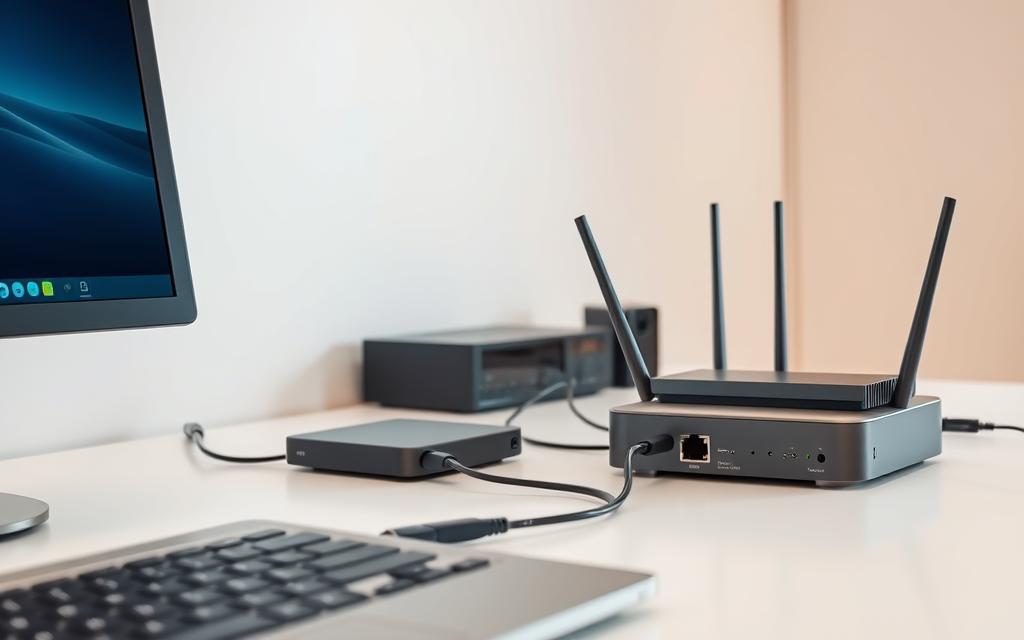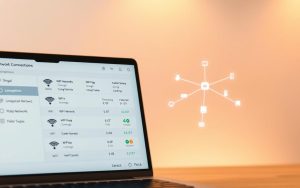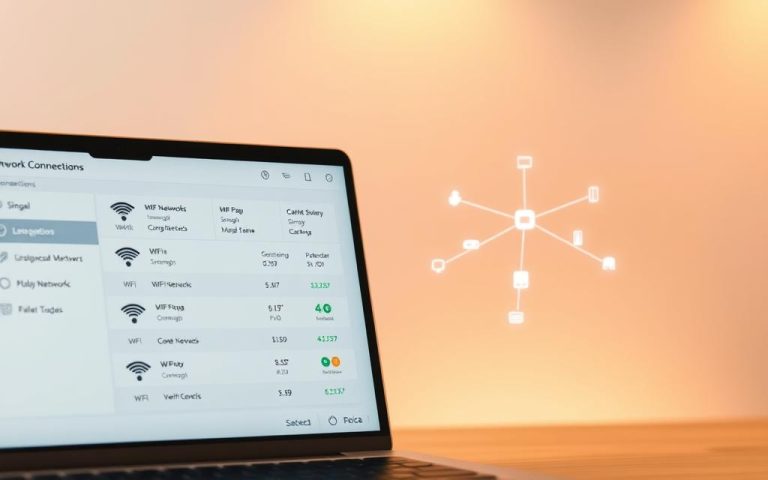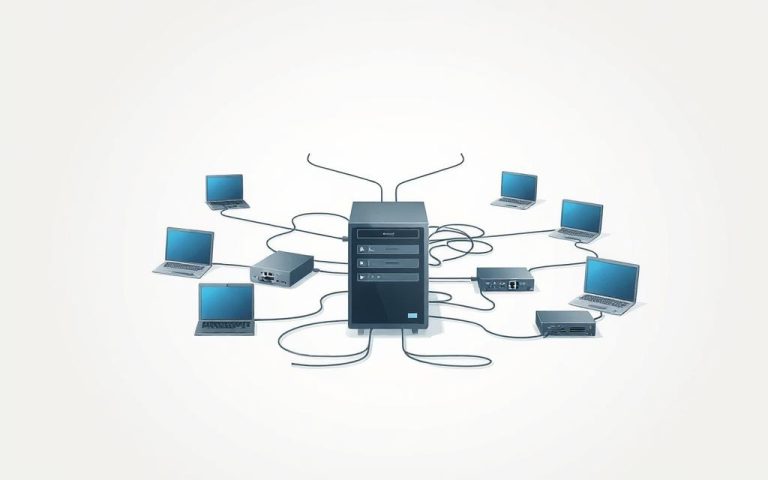How to Connect Your Computer to a Network
Setting up a network for your computer ensures seamless communication, faster data sharing, and secure internet access. Whether at home or in the office, a stable connection improves productivity and keeps devices synchronized.
Modern setups rely on wired or wireless methods, each with unique benefits. Ethernet cables offer speed and reliability, while Wi-Fi provides flexibility. Choosing the right option depends on your needs and environment.
Security is a top priority. Proper configuration prevents unauthorized access and safeguards sensitive data. Always update router settings, use strong passwords, and enable encryption like WPA3 for enhanced protection.
This guide covers essential steps, from hardware setup to optimizing performance. Follow along to create a fast, secure, and dependable connection for all your devices.
Essential Equipment for Network Setup
A reliable network starts with the right hardware. Whether for home or office use, selecting compatible devices ensures speed and stability. Below are the core components needed for a seamless setup.
Broadband Internet Connection and Modem
Your connection type determines modem compatibility. Most service providers offer three broadband options:
| Type | Cable Used | Speed Range | Best For |
|---|---|---|---|
| Fiber-optic | SFP connector | 500 Mbps–1 Gbps+ | High-bandwidth tasks |
| Cable | Coaxial | 100–500 Mbps | Streaming/gaming |
| DSL | Phone line (with filter) | 5–100 Mbps | Basic browsing |
Many ISPs provide modem-router combos, but standalone modems often support faster speeds. Check device compatibility with your provider before purchasing.
Wireless Router and Adapter
Routers direct traffic between your computer and the internet. Modern models like 802.11ax (Wi-Fi 6) offer dual-band frequencies:
- 2.4GHz: Wider coverage but slower speeds.
- 5GHz: Faster performance with less interference.
Desktops may need a separate wireless network adapter, while laptops often have built-in support. Verify adapter presence via Device Manager under “Network Adapters.”
How to Add Network to Computer: Step-by-Step Guide
Before diving into setup, ensure your system meets basic requirements. Proper hardware checks and modem configurations lay the foundation for a seamless experience.
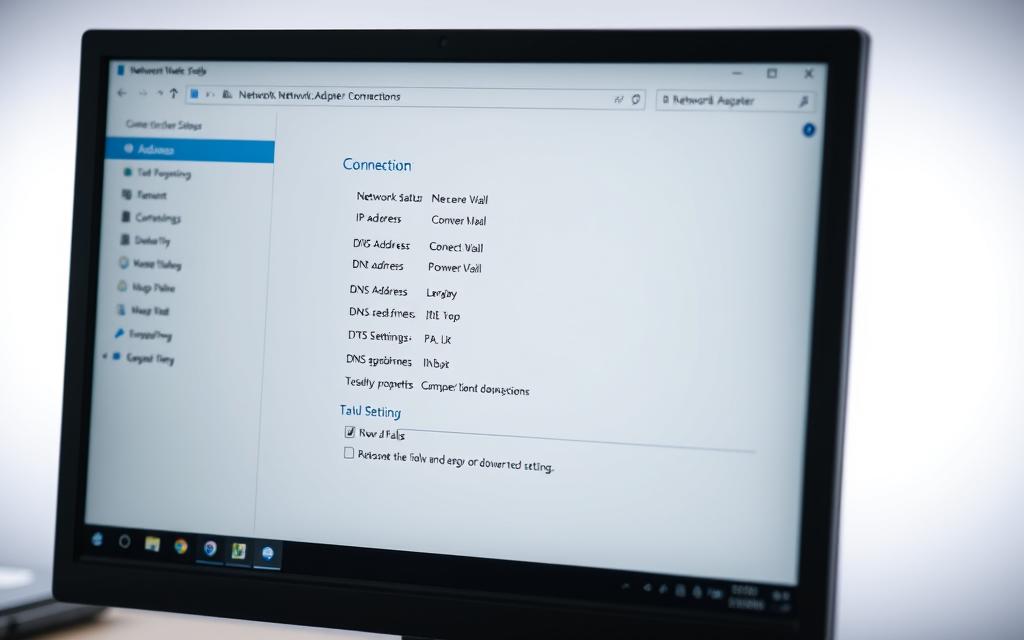
Verifying Your Wireless Adapter
Most modern devices include built-in network adapters. For Windows users, confirm this via Device Manager:
- Press Win + X, select “Device Manager.”
- Expand the Network Adapters section.
- Look for terms like “Wi-Fi” or “Wireless.”
If missing, purchase a compatible USB or PCIe adapter. Avoid cheap models—they often lack driver support.
Modem Installation and ISP Setup
Connect your modem using the correct cable type:
“Fiber-optic modems require SFP connectors, while cable uses coaxial. DSL needs a phone-line filter.”
Power on the modem and wait for stable indicator lights. Contact your ISP if connectivity fails after 5 minutes.
Safety tip: Place modems in ventilated areas to prevent overheating. Keep cables away from foot traffic.
Setting Up Your Wireless Router
A well-configured router is the backbone of any strong wireless setup. Proper placement and interference management ensure smooth performance across all devices. Follow these guidelines to maximize coverage and minimize disruptions.
Optimal Router Placement for Strong Signal
Central positioning is key for even coverage. Place the router in an open area, away from walls or large obstructions. Elevate it on a shelf or desk for better signal distribution.
Use a heatmap strategy to identify dead zones. Many modern routers include built-in tools for this. Adjust placement based on signal strength readings, measured in dBm:
| Signal Strength (dBm) | Performance Level |
|---|---|
| -30 to -50 | Excellent |
| -50 to -65 | Good |
| -65 to -80 | Fair |
| Below -80 | Poor |
Reducing Interference for Better Performance
Common household devices can disrupt your connection. Keep routers away from:
- Microwaves (operate on 2.4GHz)
- Cordless phones
- Baby monitors
- Metal objects
Building materials affect signal differently. Drywall attenuates signals by 3-6dB, while concrete blocks can reduce strength by 12-20dB. For detailed router configuration tips, visit Cisco’s networking guide.
In crowded areas, manually select less congested channels. Most 5GHz bands offer clearer channels than 2.4GHz. Check device compatibility before switching frequencies.
Securing Your Wireless Network
Router vulnerabilities can expose your entire network to threats. Default settings and weak encryption invite hackers. Proactive measures like credential updates and advanced protocols lock down your connection.

Change Default Router Credentials
Manufacturers use predictable admin logins like “admin/password.” These are public knowledge and exploited within minutes. Always:
- Replace default usernames with unique alternatives.
- Create a password mixing uppercase, symbols, and 12+ characters.
- Disable remote management to block external access.
Set Up a Network Security Key
WPA3 encryption outperforms WPA2 and WEP with:
“192-bit cryptographic strength and protection against brute-force attacks.”
For compatibility, some routers support WPA2/WPA3 mixed mode. Avoid WEP—its encryption cracks in seconds.
Configure Wi-Fi Protected Setup (WPS)
WPS offers two methods:
- Push-button: Temporarily enables pairing for new devices.
- PIN: Vulnerable to hacking—disable if unused.
For stricter security, turn off WPS entirely. Use manual network name (SSID) entry instead.
Additional layers like MAC filtering and guest sharing networks isolate devices. The FTC recommends enabling firewalls on both routers and connected devices.
Connecting to a Wireless Network on Windows
Windows offers intuitive tools for establishing wireless connections across devices. The process varies slightly between versions, but core principles remain consistent. Focus on security and signal strength to ensure reliable access.
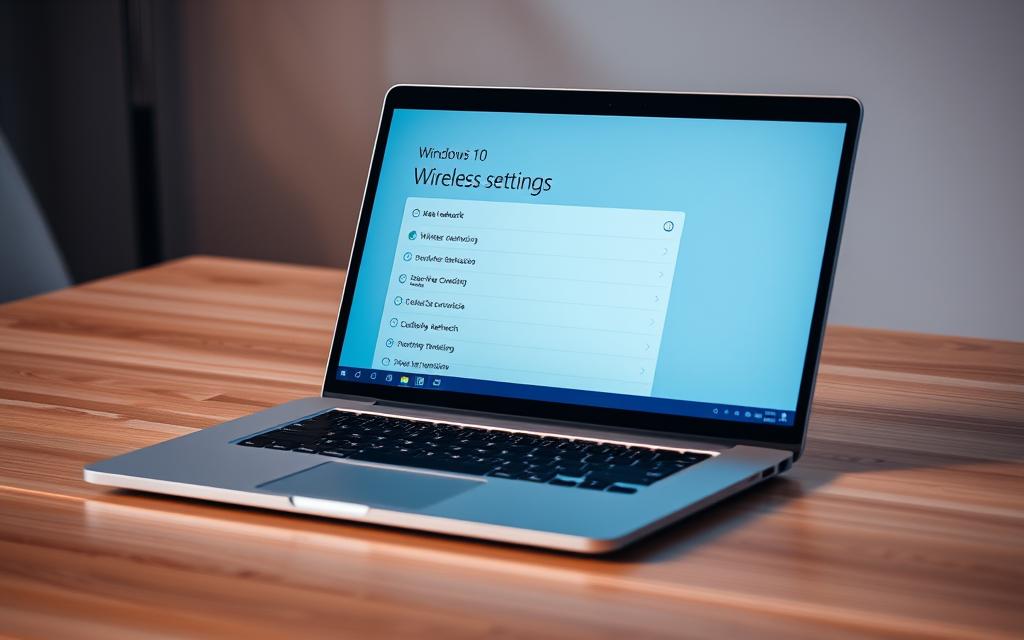
Windows 10 and 11: Navigating Network Settings
Both versions prioritize the Settings app over the legacy Control Panel. Key differences include:
| Feature | Windows 10 | Windows 11 |
|---|---|---|
| Access Path | Start Menu > Settings > Network & Internet | Start > Settings > Network & Internet |
| Status Page | Basic connection details | Enhanced diagnostics + usage graphs |
| Advanced Options | Hidden under “Network Sharing Center” | Directly linked from main page |
For enterprise setups like CMU-SECURE, select WPA2-Enterprise security. Choose Microsoft: Protected EAP (PEAP) and enable EAP-MSCHAP v2 authentication.
Entering Network Credentials and Finalizing Connection
Always verify the SSID matches your router’s name. Avoid public networks with similar spellings. Enter credentials carefully—case sensitivity matters.
For automatic reconnection:
- Check “Connect automatically” during setup
- Uncheck Automatically use my Windows logon name for corporate networks
If connections fail, use Network Troubleshooter (Windows 11) or reset the adapter (Windows 10). Prioritize 5GHz bands for faster speeds in Network Adapter Settings.
Conclusion
A secure and efficient computer setup depends on smart choices. Prioritize WPA3 encryption, regular firmware updates, and strategic router placement. These steps prevent breaches while boosting speed.
For long-term reliability, invest in scalable hardware like dual-band routers. Cloud-managed solutions offer flexibility for growing needs. Professional help ensures seamless integration for complex setups.
Follow a simple maintenance routine:
- Monitor signal strength monthly
- Change passwords quarterly
- Replace outdated devices every 3-5 years
With these practices, your network stays fast, secure, and ready for future tech. Small efforts today prevent major issues tomorrow.

